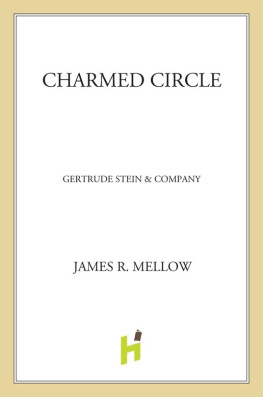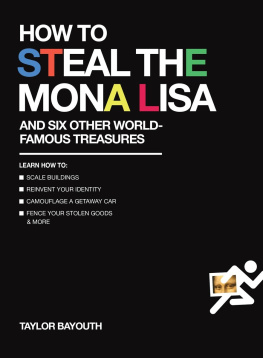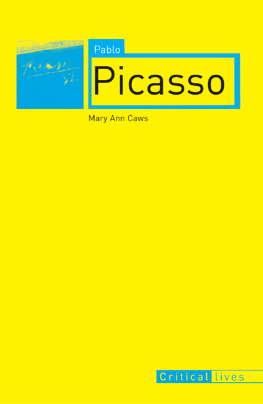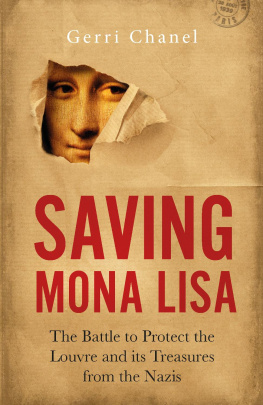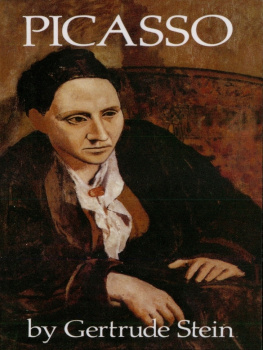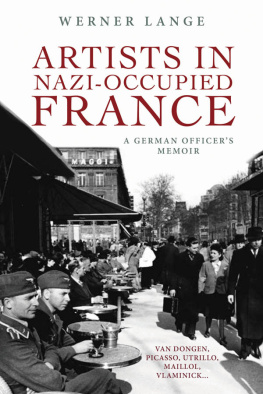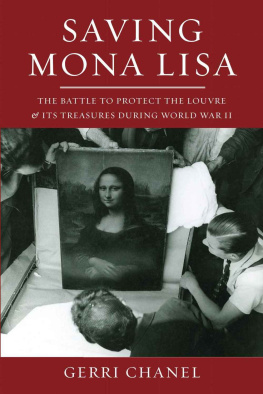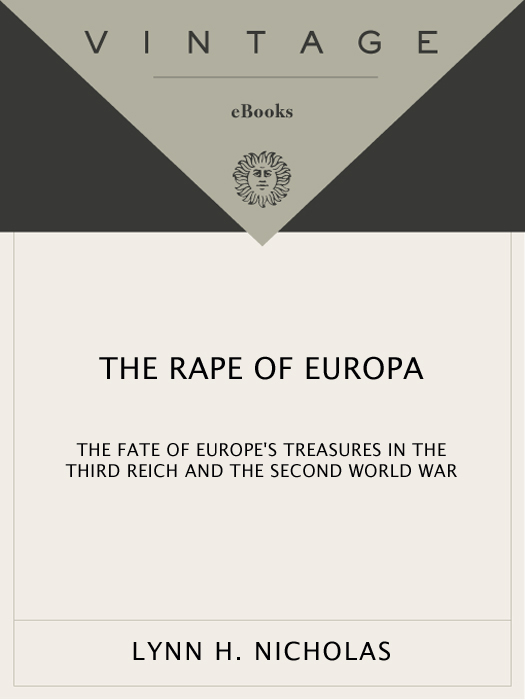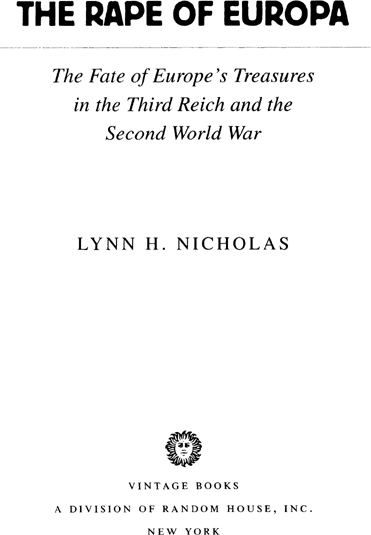I.
II.
III.
IV.
V.
VI.
VII.
VIII.
IX.
X.
XI.
XII.
XIII.
ACKNOWLEDGMENTS
Writing this book has been a long and exciting voyage of discovery for me. The propaganda, fear, and fervor of World War II were an important part of my childhood. In 1948 my family and I went to Germany and saw the shambles of her cities; in Holland I heard tales of resistance and escape. Much later the fate of works of art in this ambience became of interest to me. This book is the result of my desire to understand what happened to both people and their possessions at that time.
I have been amazed at the generosity of everyone with whom I have come in contact in the course of my research. Many of those I interviewed opened not only their archives but their hearts to me. All those concerned with the recovery of Europes patrimony are rightly proud of their achievement and their memories are vivid. My greatest regret is that I could not include every single story in this book; for each one told there are many more. I have also had to limit the number of countries covered. Events similar to those I have described took place in every nation overrun by the Nazis; each account could fill a book, all the more so given the recent opening of the archives of Eastern Europe.
My very first thanks must go to the Brussels friends who encouraged me to start this project: Julia and Christopher Tugendhat, Carole Drosin, Penny Custer, and Michele Bo Bramsen.
In Washington I have worked principally at the National Archives and the National Gallery of Art. Former director J. Carter Brown at the Gallery was enthusiastic from the beginning and generously allowed me access to the wartime correspondence of his father, John Nicholas Brown. John Wilmerding gave me precious work space. Maygene Daniels guided me through the newly organized archives and Lisi Ferber shared her amazing fund of knowledge. Most wonderful were the entire staff of the libraryand especially Neal Turtell, Caroline Backlund, Ariadne DuBasky, Ted Dalziel, Lamia Doumato, and Thomas McGill (who can find any book in the world). Ruth Philbrick, Jerry Mallick, and Wendy Cole of Photo Archives supplied pictures and companionship. I was particularly fortunate to be able to work with Craig Smyth, Kress Professor at the National Gallery, 19871988, on his own book on the Munich Collecting Point. Among many others who assisted were Bob Bowen, Kathy and Ira Bartfield, and Anna Rachwald.
The National Archives with its remarkable holdings of both German and Allied documents was no less important, and there I must above all thank Jill Brett, former director of Public Affairs, for her tremendous help, which included introductions to John Taylor, Dane Hartgrove, and Michael Kurtz. I wish I could mention every person in the various research rooms. Never have I met a more helpful group of people.
In other areas I would like to thank Constance Lowenthal of IFAR, who persuaded me I could give a lecture, Irene Bizot of the Runion des Muses Nationaux, Isabelle Vernus of the Archives Nationales in Paris, Ely Maurer of the State Department, Cynthia Walsh at the Getty Center in Los Angeles, and the staff of the Archives of American Art in Washington. Cay Friemuth, of Gtersloh, Germany; Dr. Klaus Goldmann of the Museum fr Vor- und Frhgeschichte, Berlin; Agnieska Morawinska and Professor Wojiech Kowalski of Warsaw; Patricia Dane Rogers; and the late Christopher Wright (through Marcia Carter) all supplied valuable documentation. Others who helped in many ways include Roger Mandle, Mrs. Robert Seamans, David Rust, Lynn and Arnold Lipman, John Richardson, Pierre de Sjournet, Thomas Blake, Eliza Rathbone, Stuart Feldman, Doda de Wolf, Hector Feliciano, David Gibson, and most especially my brother Chip Holman, whose library I raided. To all who read and criticized unedited copy, particularly Professor S. Lane Faison of Williams College, my gratitude; and special thanks to Marion Evans, who dealt cheerfully with the stacks of paper.
I am indebted to Alan Williams, Pat Hass, Deborah Shapley, and Robert Barnett, who gave me advice on the writing and publication process, and most particularly to Preston Brown and Stuart Blue, through whom this manuscript so serendipitously found its way (via Ash Green) into the unwaveringly patient and encouraging hands of my editor, Susan Ralston. Also at Knopf I would like to thank Jennifer Bernstein, who actually can read my writing; and Peter Andersen, who designed this volume.
Most of all I am grateful to my husband, Robin, and my sons, William, Carter, and Philip, for their love and humor; to my mother, Daisy; and to all the rest of my family and friends who cheered me on.
Washington, D.C.
1993

Advertisement for the Lucerne auction in Art News, New York, April 29, 1939
I
PROLOGUE:
THEY HAD FOUR YEARS
Germany Before the War: The Nazi Art Purges
On the afternoon of June 30, 1939, a major art auction took place at the elegant Grand Hotel National in the Swiss resort town of Lucerne. Offered that day were 126 paintings and sculptures by an impressive array of modern masters, including Braque, van Gogh, Picasso, Klee, Matisse, Kokoschka, and thirty-three others. The objects had been exhibited for some weeks before in Zurich and Lucerne and a large international group of buyers had gathered.


